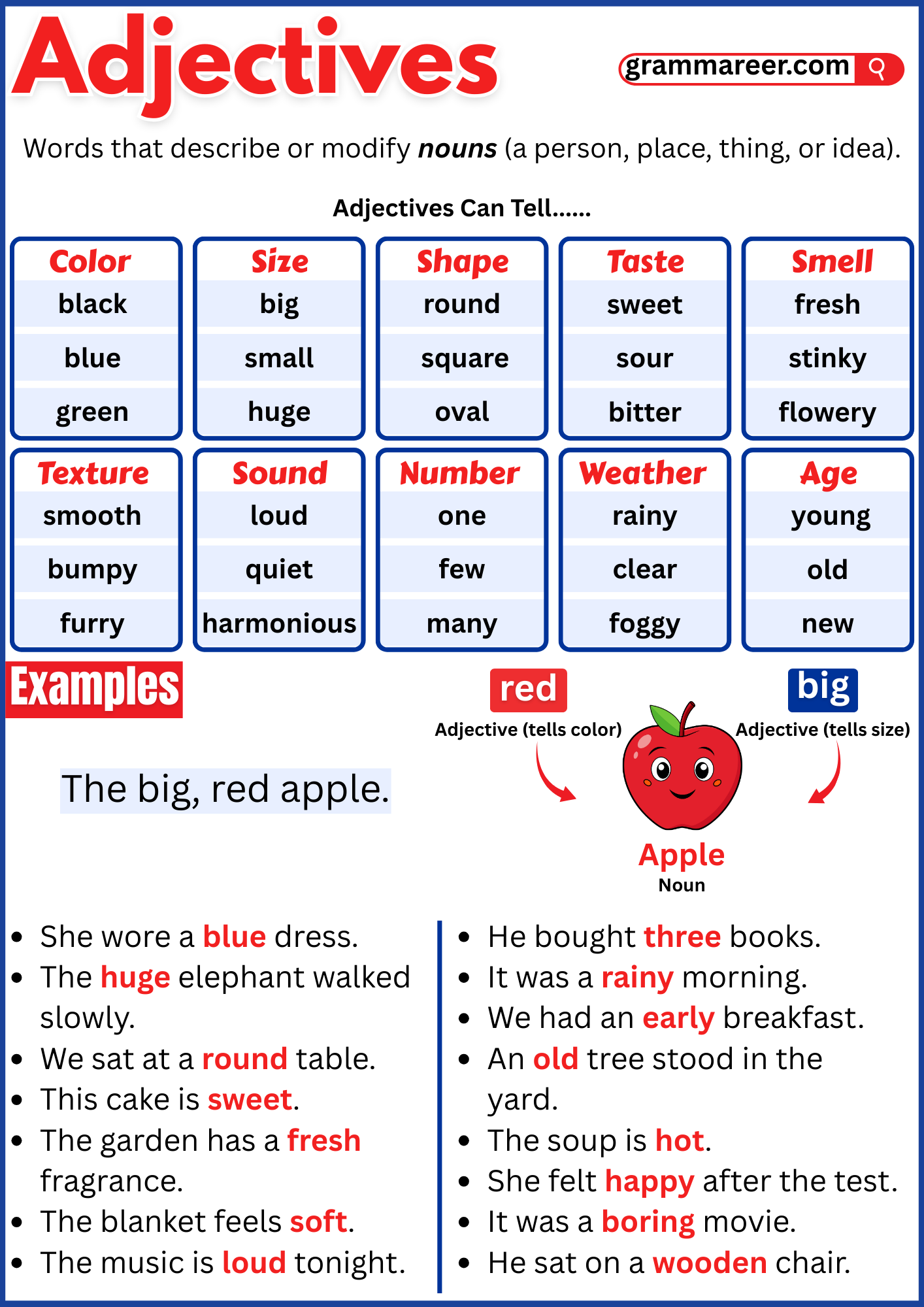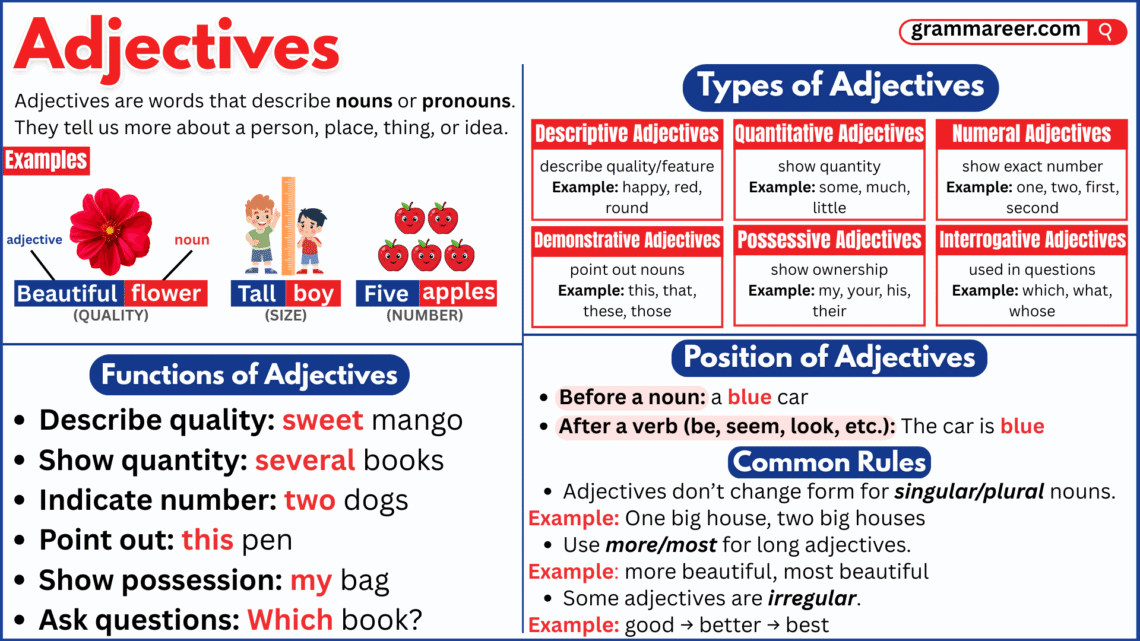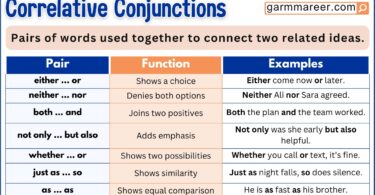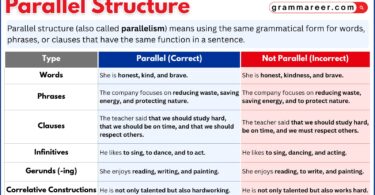Have you ever wanted to describe something better but didn’t know the right words? That’s where adjectives come in. They make our language lively and clear by describing people, places, and things—whether something is big, small, exciting, or boring.
In this article, we’ll explore what adjectives are, see examples, and learn about their different types.
Table of Contents
What are Adjectives?
An adjective is a word that gives us more information about a noun or pronoun. In simple terms, it describes or modifies something so the meaning becomes clearer. They can talk about size, color, number, shape, feelings, and many other qualities. They make our sentences more vivid and specific.
Most of the time, adjectives are placed before the noun. Sometimes, they come after the verb.
Examples:
- A tall building
- A red car
- She is happy
- The book is interesting

How to Use Adjectives in Sentences?
Adjectives are words that describe nouns. They tell us more about a person, place, or thing. In other words, adjectives add details that make sentences more interesting.
For example:
- She wore a red dress.
- We saw two birds in the tree.
- This is a funny story.
In each sentence, the adjectives (red, two, funny) describe the noun.
Where do adjectives go?
Most of the time, adjectives come before the noun:
- A small house
- A delicious cake
But adjectives can also come after the noun, especially with a linking verb like is, seem, look, feel, or become:
- The house is small.
- The cake looks delicious.
Using more than one adjective
Sometimes we use two or more adjectives together. When this happens, they usually follow a special order (opinion, size, age, color, material, etc.).
For example:
- She bought a beautiful big red bag.
If the adjectives give equal information, we can separate them with a comma or “and”:
- He is a kind, helpful friend.
- She is smart and confident.
Note: Adjectives are powerful, but don’t overuse them. Too many adjectives can make writing messy. Pick the ones that really help your reader or listener see, feel, or understand better.
Nouns as Adjectives and Adjectives as Nouns
In English, words can switch roles. A noun can act like an adjective when it describes another noun:
- I bought a chocolate cake. (chocolate is a noun but describes cake)
Adjectives can also work as nouns, often to talk about groups of people:
- The poor need support.
- The young love adventure.
So, nouns and adjectives don’t always stay in one role—they change depending on how we use them.
Degrees of Comparison in Adjectives
Adjectives don’t just describe things—they also help us compare. Imagine you’re talking about two or more people, books, or places. You’ll need different forms of adjectives to show who or what stands out. These forms are called degrees of comparison, and there are three of them:
1. Positive Degree
This is the adjective in its basic form. It simply describes without comparing.
Example:
- The movie is exciting.
Here, “exciting” just describes the movie. No comparison is being made—it’s simply saying the movie has that quality.
2. Comparative Degree
This form is used when you’re comparing two things.
Example:
- This movie is more exciting than the one we watched yesterday.
Now two movies are being compared. The adjective “exciting” changes to “more exciting” to show that today’s movie gives greater excitement than yesterday’s.
3. Superlative Degree
This form is used when you’re comparing three or more things, and one stands out as the “best” or “most.”
Example:
- That was the most exciting movie I’ve ever seen.
Here, the movie is being compared with many others. The word “most exciting” tells us that out of all the movies, this one is at the very top.
Types of Adjectives
Adjectives don’t all work in the same way. Depending on how they function in a sentence, they fall into different types. Let’s look at a few of them:
- Possessive Adjectives
- Interrogative Adjectives
- Demonstrative Adjectives
- Compound Adjectives
- Descriptive Adjectives
- Quantitative Adjectives
1. Descriptive Adjectives
These are the ones we use every day to describe things. They tell us how something looks, feels, or sounds.
Examples:
- a tall building
- a sweet mango
- a noisy street.
2. Quantitative Adjectives
These talk about numbers or amounts. They answer “how many” or “how much.”
For Example:
- three apples
- some water
- many books.
3. Demonstrative Adjectives
These point out specific things. Words like this, that, these, those make it clear which one we’re talking about.
For Example:
- this pen
- those shoes
4. Possessive Adjectives
These show belonging. Simple words like my, your, his, her, their, our, its tell us who owns something.
For Example:
- my bag
- her dress
5. Interrogative Adjectives
These come up when we ask questions about nouns.
For Example:
- which book
- what time
- whose bag
6. Distributive Adjectives
These talk about one thing or person at a time in a group.
For Example:
- each student
- every child
- either option.
Degrees of Adjective List
| Positive Degree | Comparative Degree | Superlative Degree |
| Able | Abler | Ablest |
| Big | Bigger | Biggest |
| Bold | Bolder | Boldest |
| Brave | Braver | Bravest |
| Bright | Brighter | Brightest |
| Cheap | Cheaper | Cheapest |
| Clean | Cleaner | Cleanest |
| Cold | Colder | Coldest |
| Cool | Cooler | Coolest |
| Dark | Darker | Darkest |
| Dry | Drier | Driest |
| Dirty | Dirtier | Dirtiest |
| Deep | Deeper | Deepest |
| Easy | Easier | Easiest |
| Early | Earlier | Earliest |
| Far | Farther | Farthest |
| Fit | Fitter | Fittest |
| Fine | Finer | Finest |
| Great | Greater | Greatest |
| Happy | Happier | Happiest |
| Hard | Harder | Hardest |
| Heavy | Heavier | Heaviest |
| High | Higher | Highest |
| Hot | Hotter | Hottest |
| Kind | Kinder | Kindest |
| Large | Larger | Largest |
| Late | Later | Latest |
| Light | Lighter | Lightest |
| Low | Lower | Lowest |
| Long | Longer | Longest |
| Loud | Louder | Loudest |
| New | Newer | Newest |
| Near | Nearer | Nearest |
| Nice | Nicer | Nicest |
| Noble | Nobler | Noblest |
| Old | Older | Oldest |
| Poor | Poorer | Poorest |
| Proud | Prouder | Proudest |
| Quick | Quicker | Quickest |
| Rich | Richer | Richest |
| Sad | Sadder | Saddest |
| Safe | Safer | Safest |
| Sharp | Sharper | Sharpest |
| Small | Smaller | Smallest |
| Smooth | Smoother | Smoothest |
| Soft | Softer | Softest |
| Strong | Stronger | Strongest |
| Sweet | Sweeter | Sweetest |
| Tall | Taller | Tallest |
| Thick | Thicker | Thickest |
| Ugly | Uglier | Ugliest |
| Weak | Weaker | Weakest |
| Wide | Wider | Widest |
| Wise | Wiser | Wisest |
| Young | Younger | Younges |
Adjectives vs. Adverbs
We’re often told in school that adjectives describe nouns and adverbs describe verbs. That rule is true, but it’s not the whole story. Sometimes adjectives come after a verb instead of right next to a noun. These are called predicate adjectives.
Here’s where people often get mixed up. They see a verb in a sentence and assume it always needs an adverb. But not all verbs work the same way. Linking verbs (like feel, smell, look, seem) connect the subject to a description, and in these cases, we need an adjective.
Take the sentence:
- I feel bad.
That’s correct because “bad” describes you, not how you’re doing the action of feeling. Saying “I feel badly” would actually mean you’re poor at feeling, like your sense of touch is broken.
Order of Adjectives
When we use more than one adjective before a noun, they usually follow a natural order — here’s an easy table to guide you.
| Placement | Type of Adjective | Simple Examples |
| 1 | Article or Determiner | a, the, this, my |
| 2 | Quantity | two, many, several |
| 3 | Opinion | lovely, boring, tasty |
| 4 | Size | big, tiny, medium |
| 5 | Quality | clean, rough, messy |
| 6 | Shape | round, flat, square |
| 7 | Age | young, new, old |
| 8 | Color | red, green, golden |
| 9 | Origin | American, Chinese, African |
| 10 | Material | wooden, cotton, plastic |
| 11 | Type | digital, outdoor, two-sided |
You May Also Like




